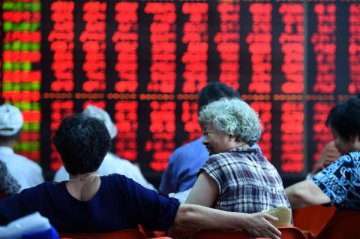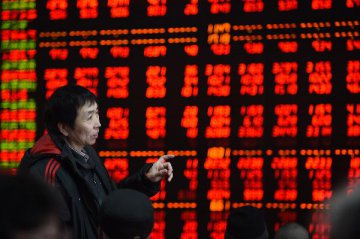Institutional investors are grabbing investment opportunities from the A-shares ahead of their inclusion into the MSCI Emerging Market Index, as reported by the China Securities Journal on Monday.
Last week, the China Merchant Bank publicly offered the first MSCI China A-share index fund. Concurrently, five other fund firms were planning on the launch of eight such products. Many private equity companies have also been closely watching the component stocks under the MSCI.
As early as several months ago, the domestic fund managers were already actively re-configuring their portfolios, as revealed in the annual reports of the A-share companies from last year.
In the fourth quarter of 2017, they increased holdings of some of the MSCI concept stocks, mostly blue-chips and those with robust performances.
Overseas investors were no exceptions, as indicated by the recent surge in the inflow of northbound funds under the two stock-connect programs.
They focused on the blue-chips as their Chinese peers did and at the same time also actively bought in some growth stocks traded at the Shenzhen Stock Exchange.
The price movements of the MSCI concept stocks were indicative of this investment fervor, as shown by the robustness of the SSE 50 Index, the CSI 300 Index, and the Shanghai Composite Index in the second half of 2017.
In its selection of component stocks, the MSCI prioritizes those with high market capitalization, strong profitability, stable liquidity, and sound business fundamentals, said Mr. Li Lifeng, an analyst at the Sinolink Securities Co., Ltd.
Most of such stocks are concentrated in the finance, consumption, and technology blocks, which will attract the bulk of overseas investments in the future, as he believed.
By the end of 2017, the MSCI's P/E ratio for China was 15.2. This figure was even lower for the CSI 300 Index, standing at 14.
With just three months left before the MSCI begins to formally include the A-shares into its Emerging Market Index in June, over RMB 100 billion worth of funds are estimated to be waiting to enter China's stock market.
Last week, the China Merchant Bank publicly offered the first MSCI China A-share index fund. Concurrently, five other fund firms were planning on the launch of eight such products. Many private equity companies have also been closely watching the component stocks under the MSCI.
As early as several months ago, the domestic fund managers were already actively re-configuring their portfolios, as revealed in the annual reports of the A-share companies from last year.
In the fourth quarter of 2017, they increased holdings of some of the MSCI concept stocks, mostly blue-chips and those with robust performances.
Overseas investors were no exceptions, as indicated by the recent surge in the inflow of northbound funds under the two stock-connect programs.
They focused on the blue-chips as their Chinese peers did and at the same time also actively bought in some growth stocks traded at the Shenzhen Stock Exchange.
The price movements of the MSCI concept stocks were indicative of this investment fervor, as shown by the robustness of the SSE 50 Index, the CSI 300 Index, and the Shanghai Composite Index in the second half of 2017.
In its selection of component stocks, the MSCI prioritizes those with high market capitalization, strong profitability, stable liquidity, and sound business fundamentals, said Mr. Li Lifeng, an analyst at the Sinolink Securities Co., Ltd.
Most of such stocks are concentrated in the finance, consumption, and technology blocks, which will attract the bulk of overseas investments in the future, as he believed.
By the end of 2017, the MSCI's P/E ratio for China was 15.2. This figure was even lower for the CSI 300 Index, standing at 14.
With just three months left before the MSCI begins to formally include the A-shares into its Emerging Market Index in June, over RMB 100 billion worth of funds are estimated to be waiting to enter China's stock market.























Latest comments